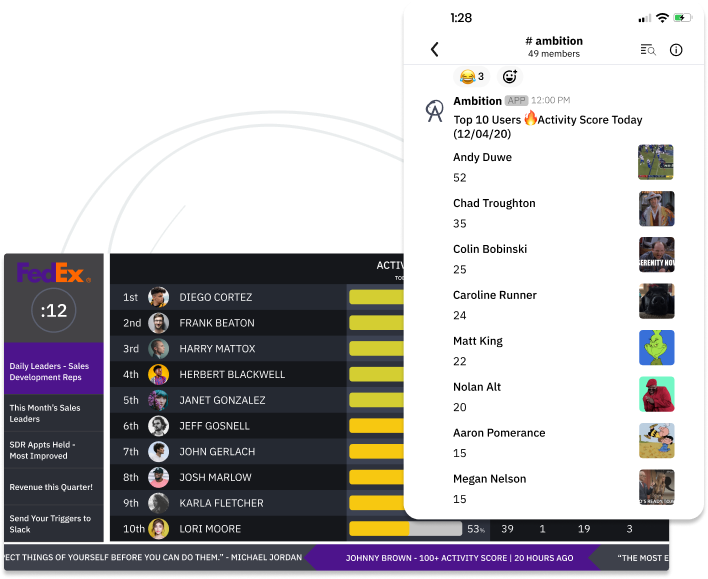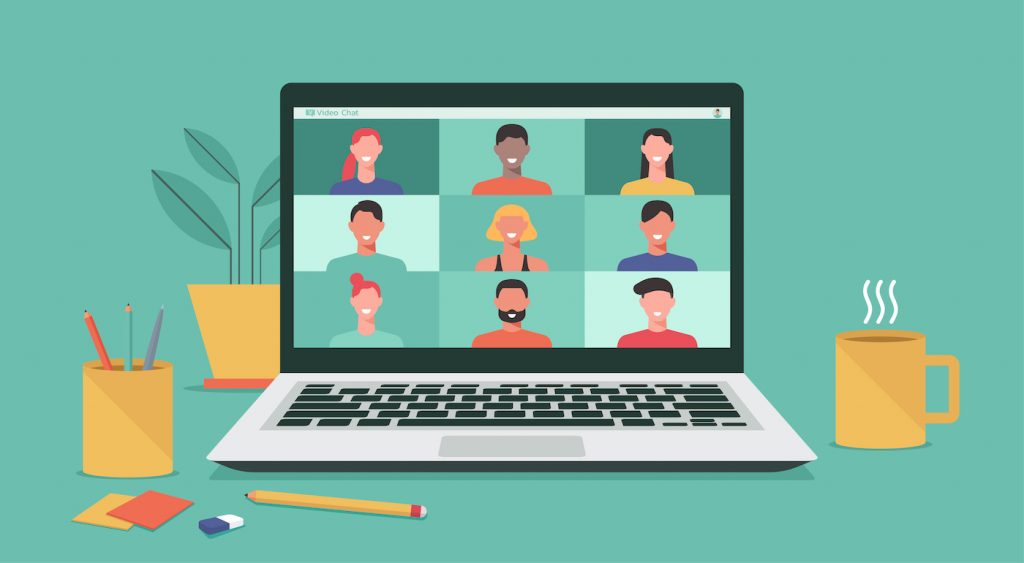Key takeaways
What is gamification in the workplace?
Gamification in the workplace is the use of game techniques in a non-game context. It encourages employee engagement, motivation, satisfaction, and retention. Remote companies in particular benefit from the ways gamification brings teams together digitally even if employees are physically working from different locations.
Some gamification techniques you can use in your workplace include:
- Creating a leaderboard to encourage healthy competition.
- Awarding digital badges for hitting milestones.
- Sending weekly or monthly “report cards” or check-ins that summarize employees’ standings.
- Transforming training courses into quests or challenges.
- Offering a lottery or sweepstakes prize for completing certain objectives.
- Providing points or credits that can be redeemed for tangible rewards.
Examples of gamification
While gamification is no longer a new thing to anyone in the business world, it’s still difficult to manage it effectively without technology. Fortunately, there are many tools that you can implement to leverage gamification to support your sales team, training curriculum, or wellness program.
Sales competitions
For salespeople in particular, the idea of a performance-based contest is appealing since competition forms the foundation of sales. Salespeople compete against their company’s bottom line and must bring in enough revenue to justify their position or secure a bonus. They must also compete against rejection, which is significantly more common than closing a deal.That’s why gamification is a logical partner for sales competitions: applying game elements using software like Ambition encourages selling behavior and motivates the team to close more deals. Sales teams can set up leaderboards for various goals to balance collaboration and individual progress.

Learning management paths
Onboarding and training programs are necessary parts of doing business. However, many traditional training courses are tedious, and few employees are motivated to complete them in a timely manner. Even if they do finish the course on time, few employees retain all the important information.
Gamified learning programs are often structured around quest- or challenge-based courses. For example, Centrical lets you choose from different game narrative options like a car race or a game of hide-and-seek. Whether you need to train a new hire about the company’s processes, conduct annual compliance certifications, or teach a whole department how to use a new software platform, this gamified structure helps improve knowledge retention and on-time completion rates.

Health and wellness programs
Effective wellness programs give employees the knowledge and tools they need to improve their lives at work and at home, often leading to higher productivity and lower health insurance costs for both employees and employers. However, wellness programs are often underutilized because employees either lack awareness or don’t have a clear incentive to participate.
Gamification applies the same principles of friendly competition and milestone accomplishments to motivate employees wherever they are in their wellness journeys. Depending on the structure of your wellness program, this could take many different forms like step count leaderboards or mindfulness challenges that change from week to week. Many of these programs require self-reporting, but some platforms like Wellable allow employees to sync data from wearable devices such as Fitbits or Apple Watches.

Wellable integrates with the devices your employees already use to track their health metrics and earn points that can be redeemed for rewards.
How to implement gamification in the workplace
1. Determine what to gamify
If your company is new to gamification, then we recommend choosing one area to start with implementation. The examples we listed above — sales competitions, help desks, onboarding, learning management, and health and wellness — are a great place to start. Pick one to focus your gamification efforts on, and then you can expand into other areas later once you get a feel for what techniques work at your company.
2. Identify gamification goals
Then, decide what big-picture goals you want to reach in that area. Some possibilities include faster completion rates for help desk tickets, increased training participation rates, or higher win rates for sales opportunities. Identifying the specific goals that you hope to achieve will help you select the most effective gamification techniques.
3. Pick a gamification technique
The specific gamification techniques you implement should be closely tied to your overall goals. For instance, a leaderboard is an effective tactic to encourage some friendly competition amongst the sales team, but it’s not the best choice if you want to encourage the whole company to complete a training course about new software implementation. Being selective about which gamification techniques you use will increase your chances of achieving your goals.
4. Select rewards or incentives
Many companies use prizes, gift cards, and other rewards as incentives in their gamification programs. Since employees aren’t motivated to keep winning the same prizes over and over again, some companies rotate reward types quarterly or yearly to keep them fresh. If you don’t have a good sense of what rewards your employees will find most motivating, use employee engagement software to survey them about what rewards would be most effective.
5. Configure analytics reports
No gamification program is perfect out of the gate, which is why you should set your key performance indicators (KPIs) before launch. Many gamified software platforms provide reports and dashboards to track employee activity, success rates, and other metrics so you can see what’s working and what isn’t. Leverage these analytics to make improvements to your gamification program and increase results over time.
6. Gather employee feedback
In addition to tracking quantitative KPIs, gathering qualitative employee feedback will help you measure the effectiveness of the gamification program. Your employees will likely have recommendations on how the program can be improved, so listen to what they have to say and take their suggestions into account.
Benefits of gamification
When implemented well, gamification offers many potential benefits for both employees and employers. For starters, it increases employee engagement and motivation, grabbing and maintaining their attention. Gamification also appeals to a younger workforce, especially Millennials and Gen Z employees who grew up with video, computer, and smartphone games that are built on these techniques.
Gamification encourages constant feedback and progress tracking, which in turn promotes a culture of continuous improvement and increased transparency. Depending on what techniques you choose, your gamification strategy can foster healthy competition or to encourage collaboration and teamwork.
When it comes to learning management specifically, you can use gamification to make training fun and engaging instead of time consuming and boring. Gamification increases completion rates for training courses and may help participants better recall the information they have learned.When taken altogether, these benefits of gamification frequently result in improved productivity and increased revenue for the company. While gamification tools and training development do represent an upfront cost, they frequently pay for themselves over time.





